#charles duc de mayenne
Photo


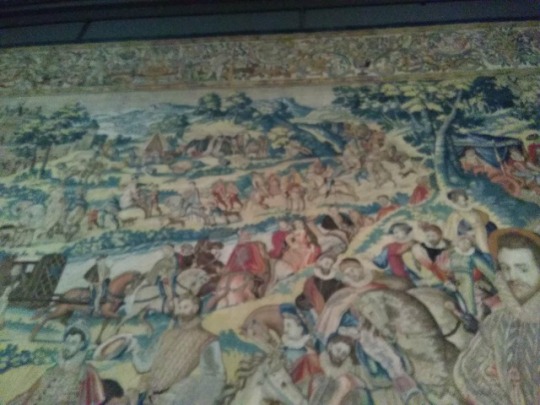

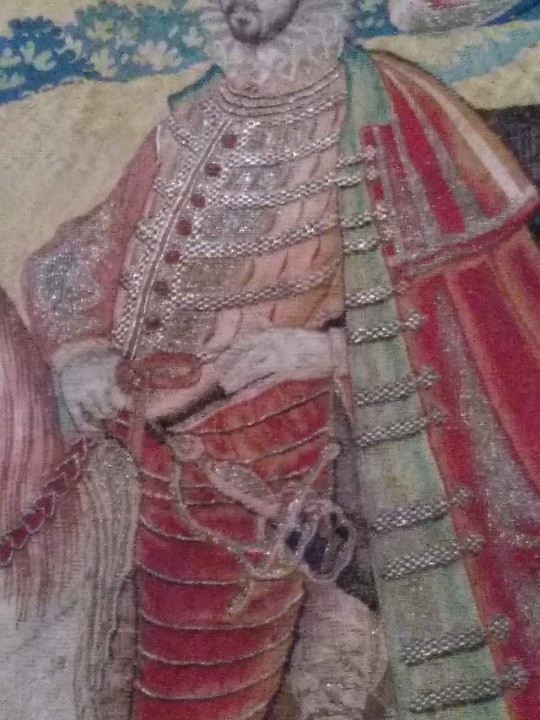
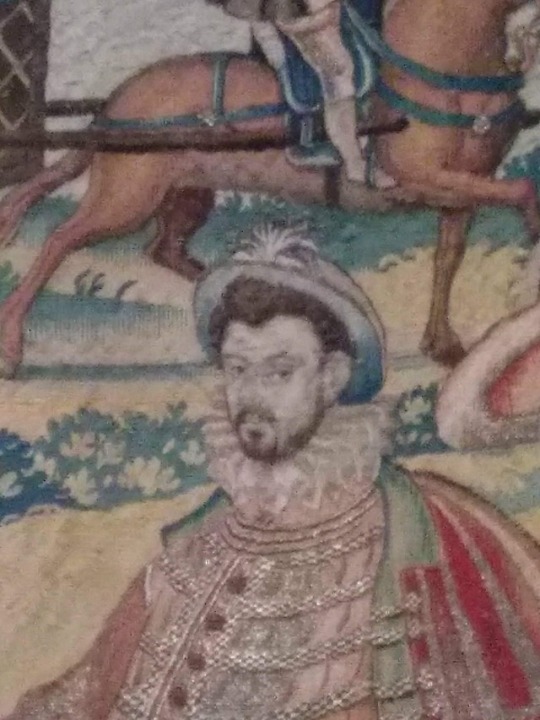


Antoine Caron and studio of Master WF, Journey, Valois Tapestries, c1576, wool warp, silk, silver, and gilded silver thread, 389.5 x 533 cm. Gallerie degli Uffizi (viewed at Cleveland Museum of Art).
Which event this tapestry depicts is unclear. The Cleveland Museum of Art believes that this tapestry most likely depicts a 1566 procession related to the capture of the Château d'Anet following the death of Henri II's mistress Diane de Poitiers. There is also an older theory about it from The Valois Tapestries by Frances Yates, who argues that it most likely represents a later journey to the Netherlands years later in 1573, when the future Henri III (then Henri d'Anjou) and Catherine de' Medici met with Louis of Nassau at Blamont to renew France's alliance with the Dutch Protestants against the Spanish. (Catherine's youngest son François d'Alençon (later François d'Anjou) would eventually personally aid the Dutch in the early 1580s, which I will discuss some more in my entry on the tapestry Elephant.) This is probably therefore the most ambiguous of the tapestries, more so than Tournament (see my earlier post).
In the background of this tapestry, we see a procession of people on horseback, with the Château d'Anet in the background. In the center is Henri on a white horse, looking beautiful as always. A little further in the background is Catherine de' Medici in a litter. The identities of the people in the foreground are less clear. The Cleveland Museum of Art identifies the man with the wide-brimmed hat, red tights(!), and pompadour hairstyle as Charles, Duc de Mayenne, brother of the infamous Henri de Guise, but Yates disagrees, identifying him as Louis of Nassau, brother of William of Orange. Frankly, I don't think he resembles either one of them, but that's just my personal opinion. Could he perhaps be one of Henri III's mignons?
Sources:
Elizabeth Cleland and Marjorie E. Wieseman, Renaissance Splendor: Catherine de' Medici's Valois Tapestries (New Haven: Yale University Press, 2018).
Tour of Renaissance Splendor exhibit, Cleveland Museum of Art (December 4, 2018).
Yates, Frances. The Valois Tapestries. London: Warburg Institute, 1959. Reprinted by Routledge, 1999. Kindle ed.
Photos by chicot-premier.
#art#valois tapestries#renaissance splendor#cleveland museum of art#1570s#medici#valois#catherine de' medici#henri iii#charles duc de mayenne#guise#louis of nassau#nassau#RED TIGHTS#Château d'Anet#chateau d'anet#frances a. yates#magnificences#court festivals#1566#1573#16th century#french history#dutch history#dutch revolt#art history#tapestry#photos#post series
6 notes
·
View notes
Photo
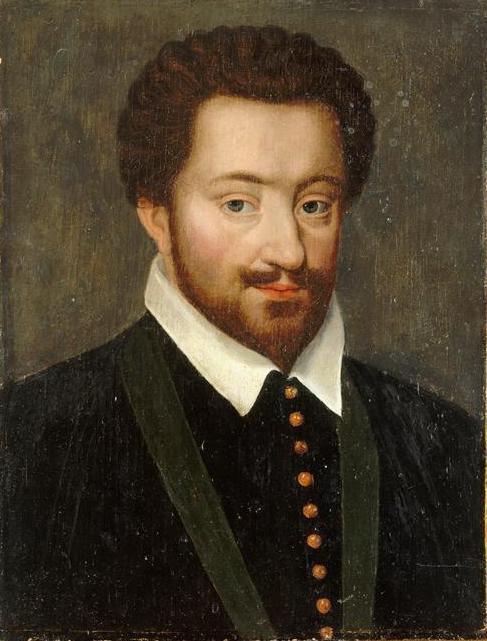
Charles de Lorraine, duc de Mayenne (1554-1611), amiral de France, chef de la Ligue en 1588
Atelier de Etienne Dumonstier, 1520-1603
5 notes
·
View notes
Link

In addition to drawing from contemporary texts, Shakespeare is thought to have based a number of the characters on historical figures. There was a real King of Navarre (a region between Spain and France), Henry, who would later become France’s King Henry IV. He and the French courtiers Charles de Gontaut, duc de Biron; Charles, duc de Mayenne; and Henri I d’Orleans, duc de Longueville are likely reimagined as Ferdinand and friends in Shakespeare’s play.
12 notes
·
View notes
Photo

5 juin 1595 : combat de Fontaine-Française (Côte-d’Or) remporté par Henri IV ► http://bit.ly/Combat-Fontaine-Francaise Exploit le plus brillant mais aussi le plus téméraire mené par Henri IV contre les ligueurs ainsi que les Espagnols avec lesquels il était en guerre et qui avaient tenté de pénétrer en Bourgogne par la Franche-Comté, il marque la fin de la Ligue en France et se traduit par la mise en fuite, devant 3000 Français, de 12 000 ennemis, le monarque les ayant pourtant attaqués avec plus de courage et de bonheur que de prudence #combat #bataille #Fontaine #Française #victoire #roi #HenriIV #Espagnols #Ligue #ligueurs #Charles #Lorraine #duc #Mayenne #CôtedOr #Bourgogne #histoire #france #history #passé #past #français #french #news #événement #newsfromthepast
#combat#bataille#Fontaine#Fran#victoire#roi#HenriIV#Espagnols#Ligue#ligueurs#Charles#Lorraine#duc#Mayenne#C#Bourgogne#histoire#france#history#pass#past#fran#french#news#newsfromthepast
3 notes
·
View notes
Photo


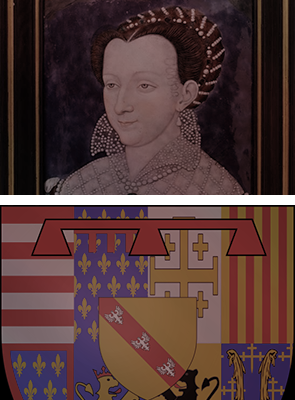

WOMEN’S HISTORY † CATHERINE DE LORRAINE (18 July 1552 – 6 May 1596)
Catherine-Marie de Lorraine was the eldest daughter of François Ier de Lorraine, duc de Guise and Anna d’Este. She was ten-years-old when her father was assassinated by a Huguenot named Jean de Poltrot de Méré. Like her brother, Henri, Catherine believed that Gaspard de Coligny, seigneur de Châtillon was involved in their father's assassination. On 4 February 1570, she married the Prince of the Blood, Louis de Bourbon, duc de Montpensier, who had once been sympathetic to the Huguenots, but changed allegiance to benefit himself. Her husband died in 1582, leaving her a widow at the age of 30.
Unlike her famously beautiful mother, Anna, and cousin, Mary I of Scotland, Catherine was considered plain and was lame and hunchbacked besides. At the French court, she became known as a malicious intriguer. Like her brother, she was extremely hostile to Henri III and his favourites. After her brother founded the Catholic League, Catherine became greatly involved in writing propaganda for the League and inciting Parisian priests and preachers against the king. During the Day of the Barricades in May 1588, Catherine stalked the streets of Paris with a pair of scissors in her belt, announcing that she intended to tonsure Henri III and send him to a monastery.
Catherine was incensed when Henri III arranged for the assassination of her brothers, Henri and Louis II, cardinal de Guise. She and her sister-in-law, Catherine de Clèves, both encouraged the assassination of Henri III. Following Henri III’s assassination by Jacques Clément, Catherine openly boasted that she had incited the assassination, while her sister-in-law was a bit more circumspect.
She tried to encourage her last surviving brother, Charles, duc de Mayenne, and nephew, Charles de Guise, to claim the throne, but was disappointed when they proclaimed their loyalty to Henri de Bourbon instead. Henri III's widow, Louise de Lorraine-Vaudémont, begged Henri de Bourbon to punish Catherine for her involvement in her husband's assassination, but he refused. Unlike her sister-in-law, Catherine never fully reconciled with Henri de Bourbon and continued her intrigues until her death in 1596.
#catherine marie of lorraine#house of lorraine#house of bourbon#french history#european history#women's history#history#women's history graphics#nanshe's graphics
18 notes
·
View notes